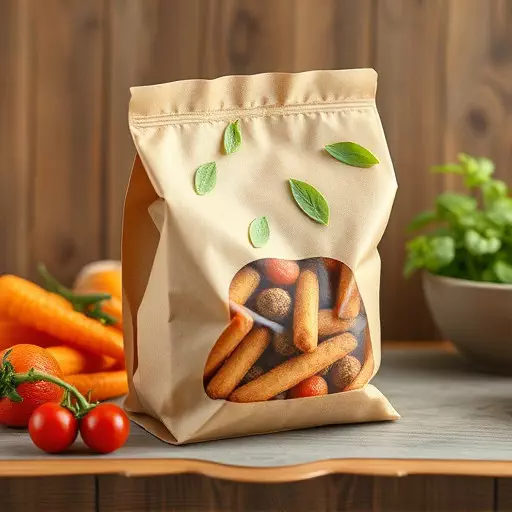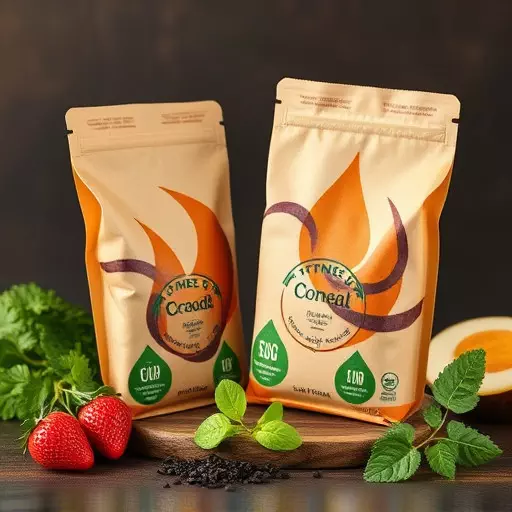Food packaging solutions play a pivotal role in safeguarding our food supply while offering businesses an array of marketing opportunities. As consumers become increasingly conscious of environmental impact, understanding sustainable food packaging and its benefits is crucial. This article explores the importance of customization in food packaging solutions, delving into various sustainable food packaging materials and their positive impacts on both businesses and consumers. We’ll also uncover innovative designs and best practices for implementing eco-friendly changes.
- Understanding Food Packaging Solutions: The Importance of Customization and Sustainability
- Types of Sustainable Food Packaging Materials
- Benefits of Custom Food Packaging for Businesses and Consumers
- Innovations in Eco-Friendly Food Packaging Design
- Implementing Sustainable Food Packaging: Strategies and Best Practices
Understanding Food Packaging Solutions: The Importance of Customization and Sustainability

In the realm of food packaging solutions, customization and sustainability are two paramount considerations. Every business has unique product attributes, consumer preferences, and brand identity that need to be reflected in their packaging. Custom food packaging allows manufacturers to create designs, shapes, and sizes tailored to their specific products, ensuring optimal protection and presentation. This personalization not only enhances the aesthetic appeal but also provides functional benefits like improved shelf life and easy handling.
Moreover, as environmental consciousness grows, sustainable food packaging is gaining traction. It involves using eco-friendly materials, reducing waste, and minimizing the carbon footprint throughout the packaging process. Consumers are increasingly demanding green alternatives, and businesses that embrace sustainable practices not only meet this demand but also contribute to a healthier planet. This shift towards sustainability in food packaging solutions is a testament to the industry’s evolving responsibility towards the environment.
Types of Sustainable Food Packaging Materials

In the quest for more eco-friendly practices, the food industry has seen a significant shift towards sustainable food packaging. These innovative solutions offer an alternative to traditional materials, reducing environmental impact while maintaining product quality and safety. Biodegradable plastics derived from renewable resources like cornstarch or cellulose are gaining popularity as they break down naturally without leaving toxic residues, making them a viable food packaging solution for various products. Additionally, materials such as paper, cardboard, and bamboo offer excellent recyclability and compostability, ensuring minimal waste generation.
Customizable options in sustainable food packaging have also opened up new avenues for brands. Custom-designed boxes, bags, and containers made from these eco-friendly materials allow businesses to maintain brand identity while promoting sustainability. This approach not only appeals to environmentally conscious consumers but also provides an opportunity for companies to differentiate themselves through unique and engaging packaging designs, thereby enhancing their custom food packaging strategies.
Benefits of Custom Food Packaging for Businesses and Consumers

Custom food packaging offers a multitude of benefits for both businesses and consumers in today’s competitive market. For businesses, it serves as a powerful marketing tool, allowing them to create unique brand identities through visually appealing and distinctive designs. This customizability enables companies to stand out on shelves and capture consumer attention, driving sales and fostering customer loyalty.
Furthermore, sustainable food packaging is a growing concern, and custom solutions play a pivotal role in addressing this. Businesses can now opt for eco-friendly materials and innovative designs that reduce waste, minimize environmental impact, and appeal to environmentally conscious consumers. For consumers, personalized packaging ensures product freshness and quality, provides clear nutritional information, and offers a satisfying unboxing experience—all of which contribute to a positive perception of the brand.
Innovations in Eco-Friendly Food Packaging Design

The shift towards sustainability has led to a surge in innovations for eco-friendly food packaging design. Consumers are increasingly conscious of the environmental impact of their choices, and this trend is reflected in the food industry’s response. As a result, we’re seeing a rise in custom food packaging solutions that prioritize both functionality and minimal environmental harm. These advancements range from biodegradable materials like plant-based plastics to creative designs that extend shelf life, reducing waste.
Companies are embracing sustainable food packaging not only to meet consumer demands but also to stay competitive. Customizable options allow brands to create unique, eye-catching packages that enhance their products’ visual appeal while conveying their commitment to eco-friendly practices. This dual benefit—attracting environmentally mindful consumers and fostering brand differentiation—drives the continuous evolution of food packaging solutions towards a greener future.
Implementing Sustainable Food Packaging: Strategies and Best Practices

Implementing Sustainable Food Packaging requires a strategic approach that balances environmental responsibility with product protection and brand aesthetics. One key strategy is to transition from conventional materials like plastic to eco-friendly alternatives such as biodegradable or compostable options. This shift demands careful consideration of the packaging’s structural integrity to ensure food safety during transportation and storage. Many food manufacturers are adopting custom food packaging designs, tailored to specific product needs, that incorporate sustainable materials.
Best practices include minimizing overall material usage through innovative design, utilizing recycled content, and exploring refillable or reusable packaging systems. Collaboration between brands, packaging suppliers, and recycling facilities is crucial for establishing efficient take-back programs. Moreover, using clear, consumer-friendly labeling to educate on proper disposal or recycling can significantly enhance the sustainability impact of food packaging solutions.
